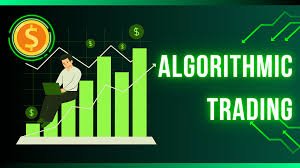In the previous blog me came to know about history and evolution of algo trading. in this blog we are giving the key components of algo trading system i.e., what are the basic requirements the required to develop new algo.
Developing new algo is a complicated process but today with infinite resources and data search engine machines made it easy.
Here are the Key Components of an Algo Trading System
Market Data Feed
- Real-time and historical price data
- Order book information
- News and sentiment analysis (optional)
Trading Strategy
- Mean reversion, momentum, arbitrage, statistical models, etc.
- Rule-based or AI/ML-based decision-making
Risk Management
- Stop-loss, take-profit
- Position sizing, portfolio diversification
- Volatility and exposure limits
Execution Engine
- Order routing to brokers/exchanges
- Smart order execution (e.g., VWAP, TWAP, iceberg orders)
- Low-latency trade execution

Backtesting and Optimization
- Running the strategy on historical data
- Analyzing performance metrics (Sharpe ratio, drawdowns, etc.)
- Optimizing parameters for better returns
Broker/API Integration
- Connecting with brokers (e.g., Interactive Brokers, Alpaca, Binance, etc.)
- Placing, modifying, and canceling orders programmatically
Monitoring and Logging
- Real-time dashboards for performance tracking
- Error handling and debugging logs
- Alert systems for anomalies
Common Algo Trading Strategies
- Market Making – Buying and selling continuously to capture the bid-ask spread
- Trend Following – Trading in the direction of prevailing market trends
- Mean Reversion – Betting that prices will revert to their historical average
- Arbitrage – Exploiting price differences between exchanges or assets
- Statistical Arbitrage – Using quantitative models to identify mispriced assets
- High-Frequency Trading (HFT) – Executing thousands of trades in milliseconds
Tech Stack for Algo Trading
- Programming Languages: Python, C++, Java, Rust
- Libraries: Pandas, NumPy, SciPy, TensorFlow, PyTorch (for AI-based trading)
- Trading APIs: Interactive Brokers (IBKR), Alpaca, Binance, TD Ameritrade
- Backtesting Frameworks: Backtrader, Zipline, QuantConnect
Algorithmic trading systems have revolutionized financial markets by enabling automated, fast, and data-driven trading. By leveraging technology, traders can execute strategies efficiently while minimizing human error and emotional bias. A well-designed algo trading system integrates market data analysis, strategy execution, risk management, and performance optimization.
While algo trading offers advantages like speed, precision, and scalability, it also comes with challenges such as market volatility, infrastructure requirements, and regulatory compliance. Success in algorithmic trading depends on robust strategy development, thorough backtesting, and continuous monitoring.
As financial markets evolve, advancements in AI and machine learning are further enhancing algo trading capabilities, making it an exciting and competitive field for traders, quants, and developers.












Leave a Reply
Want to join the discussion?Feel free to contribute!